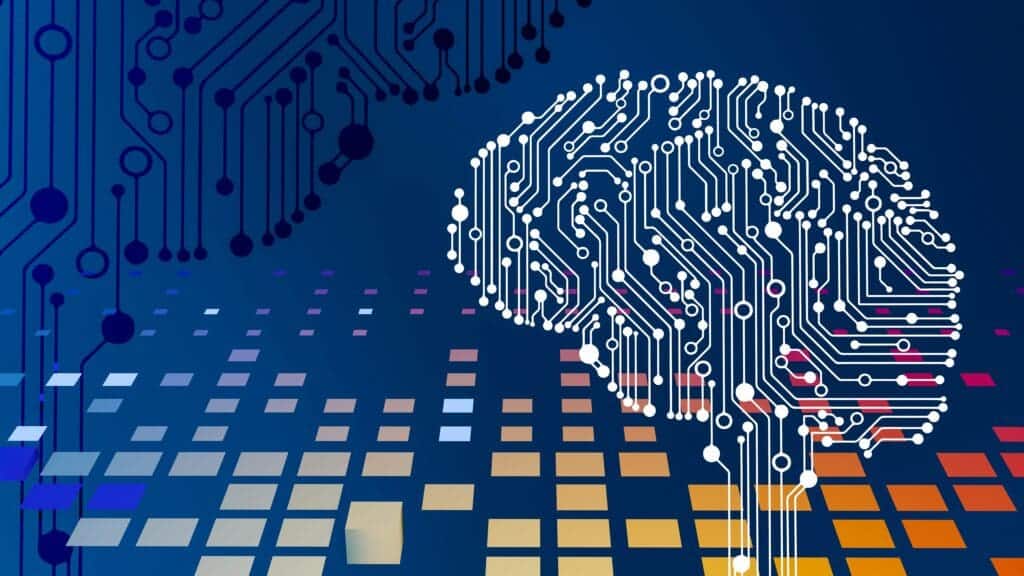Understanding the Efficient Study Methods

Studying under a time crunch often refers to the necessity of absorbing a significant amount of information within a restricted timeframe, often leading to heightened feelings of stress and anxiety. This situation can arise from various circumstances, such as impending examinations, project deadlines, or unforeseen life events. The psychological implications of this high-pressure environment are profound. While some individuals may thrive under pressure, others may experience debilitating stress that hampers their ability to focus and retain information effectively.
The urgency inherent in a time crunch significantly impacts cognitive processes. Research indicates that when individuals are pressed for time, their brains may struggle to consolidate new information. Typically, learning requires both encoding and storage, but overwhelming time constraints can hinder these processes by triggering a fight-or-flight response. Consequently, rather than engaging productively with the material, students may revert to superficial techniques, such as cramming, which do not foster long-term retention.
Common challenges faced during these high-pressure study sessions include distractions, lack of clarity on key concepts, and the temptation to skip essential topics entirely. This not only reduces the quality of learning but also increases the likelihood of negative outcomes such as poor performance or burnout. In this context, a strategic mindset becomes imperative. Establishing realistic goals, prioritizing essential information, and employing efficient study techniques can significantly enhance retention even in limited time frames. By adopting a methodical approach, learners can navigate the challenges posed by time constraints more effectively, thereby achieving better academic outcomes without compromising their well-being.
Setting Clear Goals

Establishing clear study goals is a crucial step in enhancing time-efficient study techniques, particularly when faced with tight deadlines. Clearly defined objectives provide direction and focus, enabling learners to navigate their study sessions more purposefully. By setting specific, measurable, achievable, relevant, and time-bound (SMART) goals, students can better manage their study time and reduce anxiety often associated with cramming for exams or meeting assignment deadlines.
When setting study goals, it is essential to prioritize topics based on their weight and importance. Analyzing the syllabus or exam guide can help identify key areas that carry more significance. For instance, if certain subjects are weighted more heavily in an upcoming test, dedicating more study time to these areas can yield higher overall marks. It is beneficial to create a study plan that highlights high-priority topics, allowing students to allocate their limited time effectively. This not only ensures that crucial content is covered but also aids in deeper comprehension of complex subjects, which can ultimately lead to better retention of information.
Aligning study objectives with exam or assignment requirements is another vital aspect of setting clear goals. Understanding the format and expectations of upcoming assessments can help tailor study sessions. For example, if an exam consists primarily of multiple-choice questions, focusing on key concepts, terms, and definitions may be more beneficial than delving into deeper analysis. Additionally, for assignments, one must align the study objectives with the grading criteria, ensuring that research and writing phases meet the expectations laid out by instructors. By taking these steps, learners can approach their studies systematically, maximizing efficiency even when time is limited.
Effective Study Techniques for Limited Time

In today’s fast-paced academic environment, students often find themselves needing to study efficiently under tight deadlines. Employing the right study techniques can significantly enhance learning and retention, even when time is constrained. One of the most efficient methods is the Pomodoro Technique. This technique involves studying in short bursts—typically 25 minutes—followed by a 5-minute break. This structured approach not only helps maintain focus but also encourages regular mental breaks, which can improve overall productivity. To implement this technique, students can use a simple timer or various apps designed to assist in managing study intervals.
Another valuable technique is active recall. This method revolves around testing oneself on the material rather than passively reading or highlighting notes. By actively retrieving information, students are more likely to cement knowledge in their long-term memory. Flashcards can be an effective tool for this approach, allowing for quick and effective revision sessions. Students should craft questions based on the material and periodically challenge themselves to answer without looking at their notes.
Spaced repetition is yet another crucial technique for efficient learning. This method involves revisiting the same information over increasingly longer intervals to enhance memory retention. By spacing out review sessions, students can prevent cramming and ensure that their understanding deepens over time. Incorporating spaced repetition into study schedules allows for a more sustainable learning process, particularly in limited time scenarios.
Incorporating these techniques into a study routine can result in significant gains in learning efficiency. Understanding how to effectively manage one’s study time using these methods can transform a seemingly overwhelming amount of material into manageable and digestible portions, paving the way for success even under pressure.
Maximizing Information Retention

When faced with the challenge of studying in a limited timeframe, effectively retaining information becomes crucial. Cognitive strategies can significantly enhance your ability to absorb and recall knowledge. One such method is visualization. Engaging in visualization involves creating mental images or diagrams that represent the information at hand. This technique not only aids in comprehension but also strengthens memory, as visual elements are often easier to remember than abstract concepts. For instance, when studying a complex topic, transforming it into a visual map can facilitate better retention and understanding.
Another effective strategy is summarization. This involves condensing the material you are learning into concise summaries. By focusing on key points and main ideas, you reinforce your understanding and make it easier to retrieve information later. Writing down summaries in your own words can also help solidify the concepts, as the act of articulating thoughts necessitates active engagement with the material. Summarization can help prevent cognitive overload, particularly when time is of the essence.
Additionally, the “teach-back” method can significantly boost retention levels. This approach requires you to explain the material to someone else, effectively putting the knowledge into practice. Teaching back material helps clarify your own understanding and highlights any gaps in knowledge. The process engages different parts of your brain, promoting deeper learning. By articulating what you’ve studied, you’re likely to remember it more effectively compared to passive reading or memorization techniques.
In order to maximize information retention while studying under pressure, incorporating visualization, summarization, and the teach-back method can streamline your learning process. By using these cognitive strategies, you can enhance both understanding and recall, making the most of your limited study time.
Leveraging Study Breaks and Rest

The importance of incorporating strategic breaks into study sessions cannot be overstated, particularly when time is limited. While it may be tempting to engage in marathon study sessions to maximize productivity, research has consistently shown that taking short, structured breaks actually enhances overall focus, retention, and cognitive performance. Study breaks serve as crucial intervals that allow the brain to process and consolidate information, thereby improving long-term retention.
When individuals study for prolonged periods without breaks, they may experience diminishing returns in terms of productivity. Mental fatigue can set in, leading to decreased concentration and poorer retention of newly learned material. In contrast, implementing a study break of even just a few minutes can provide an opportunity for the mind to rest, recharge, and ultimately enhance performance. Techniques such as the Pomodoro Technique, which involves studying for 25 minutes followed by a 5-minute break, can be especially effective in maintaining focus and motivation during intense study periods.
Furthermore, adequate rest is essential for optimal cognitive functioning. A lack of sleep can impair memory, decision-making abilities, and overall mental efficiency. During time crunches, it may seem counterproductive to prioritize sleep over additional study time. However, sacrificing sleep can jeopardize one’s ability to learn and recall information effectively. Therefore, it is crucial to create a balanced study schedule that respects the need for both study and adequate rest. By understanding the importance of well-timed breaks and sufficient sleep, students can enhance their capacity to learn efficiently, even under time constraints.
Utilizing Technology and Resources

In today’s fast-paced academic environment, technology has emerged as a pivotal ally in facilitating time-efficient study practices. With a plethora of educational apps and online resources available, students can significantly enhance their learning experiences and optimize their study sessions. These digital tools not only provide access to essential information but also enable learners to implement effective study strategies.
One popular category of resources includes educational apps designed to assist with note-taking, time management, and subject comprehension. For instance, applications such as Evernote and OneNote allow users to organize their notes seamlessly, while tools like Trello can help in scheduling study sessions and keeping track of deadlines. By leveraging such technology, students can improve their organizational skills, making their study time more productive.
Online platforms, such as Khan Academy and Coursera, offer courses covering a wide range of subjects, allowing learners to access quality education at their own pace. These resources provide not only video tutorials but also interactive exercises that reinforce learning and promote retention. With the ability to revisit lessons and quiz oneself, students can rapidly assimilate knowledge and prepare for exams effectively.
Furthermore, digital study tools like Quizlet facilitate the creation of flashcards and practice tests, which are essential for quick memorization. These tools utilize spaced repetition algorithms to enhance the retention of information over time, making them invaluable for learners who are pressed for time. Integrating multimedia learning resources not only caters to different learning styles but also makes the study process more engaging.
Ultimately, the effective use of technology in studying can substantially streamline the learning process. By selecting the right educational apps and online resources, students can manage their time better while acquiring knowledge efficiently. This enables them to focus on mastering the material without the overwhelm often associated with traditional study methods.
Time Management Skills for Prolonged Study Periods

Effective time management is essential for students who aim to maximize their study periods, especially when preparing for significant exams or managing extensive coursework. Creating a structured study schedule plays a critical role in facilitating this process. A well-defined schedule not only allocates specific times for studying but also incorporates breaks, which are integral to maintaining focus and preventing burnout. Employing tools like calendars or digital apps can aid in mapping out these study periods, ensuring all subjects and topics receive ample attention.
Prioritizing tasks is another fundamental aspect of time management. Students should assess the urgency and importance of tasks, allowing them to focus on what requires immediate attention. Utilizing techniques such as the Eisenhower Matrix can help in categorizing tasks based on their significance, thus streamlining the study process. By recognizing which subjects need immediate focus, learners can allocate their time efficiently, ensuring that critical areas are covered well in advance of exams.
Breaking down larger topics into manageable units is also crucial for prolonged study periods. This breakdown transforms overwhelming content into digestible sections that students can tackle one at a time. Techniques like chunking information help in retaining knowledge and can significantly enhance productivity. Moreover, implementing scheduled review sessions for previously learned material will reinforce retention and understanding.
To combat procrastination, students should adopt strategies to enhance their discipline. Techniques such as the Pomodoro Technique—studying in short bursts followed by breaks—can create a sense of urgency and improve concentration. Additionally, setting specific, measurable goals can provide clarity on what needs to be achieved during each study session. These time management skills, when practiced diligently, can lead to more effective and rewarding study experiences over prolonged periods.
The Importance of Review and Revision

In the realm of effective studying, particularly under the constraints of time, review and revision emerge as vital components in enhancing retention and comprehension. Engaging in systematic review reinforces the neural connections associated with learned material, making retrieval easier during high-pressure situations. Revision can be approached through various strategies, ensuring that understanding is both solidified and applied efficiently.
One effective method for organizing information is the creation of summary notes. By distilling complex topics into concise points, students can focus on the core concepts without being overwhelmed by excessive details. Summary notes should encapsulate fundamental ideas, important dates, and key terms, serving as quick references that facilitate last-minute revisions. Moreover, incorporating visual aids such as diagrams and flowcharts can enhance memory retention, turning abstract information into more digestible formats.
In addition to summary notes, practice tests represent another powerful revision tool. By simulating exam conditions, these tests offer students the opportunity to assess their knowledge and identify areas where further study is needed. Furthermore, answering questions under timed conditions can create a sense of urgency similar to that of actual examinations, helping to bolster confidence and improve time management skills. Regularly testing oneself not only reinforces learning but also aids in alleviating anxiety through familiarity with the exam format.
In summary, the incorporation of review and revision into one’s study routine is indispensable, particularly when faced with time constraints. By implementing techniques such as summary notes and practice exams, students can effectively enhance their information retention and navigate their studies with greater ease, ensuring they are well-prepared even in the crunch time before exams.
Staying Motivated and Focused

Maintaining motivation and focus during study sessions is critical for effective learning, especially when time is limited. To foster a productive learning environment, it is essential first to set up a space conducive to concentration. Choose a quiet area free from distractions, preferably a spot designated for study purposes. This physical separation signals the brain that it is time to engage with the material, enhancing cognitive engagement and retention.
Minimizing distractions is another important strategy for maintaining focus. Turn off notifications on digital devices and consider using apps that block distracting websites during study sessions. Additionally, establishing boundaries with family or roommates during this time can help reduce interruptions. Noise-canceling headphones or soft instrumental music may aid concentration while preventing background noise from hindering performance.
Setting specific, achievable goals for each study session can also significantly improve motivation. By breaking down larger tasks into smaller, manageable sections, learners are more likely to experience a sense of accomplishment, which can boost motivation. Using the Pomodoro Technique, which involves studying for 25 minutes followed by a 5-minute break, can help refresh focus while encouraging continuous progress. Another effective strategy is employing positive reinforcement; rewarding oneself after completing a study goal can encourage continued effort. This could range from taking a short break, enjoying a favorite snack, or participating in a leisurely activity.
Incorporating these techniques fosters a structured approach, which can enhance both motivation and focus. As concentration improves, learners can delve deeper into material, ultimately making study efforts more effective and efficient over time. By creating a supportive study environment, minimizing distractions, and integrating goal-oriented tasks with positive reinforcement, one can effectively navigate the challenges of learning under tight timelines.

